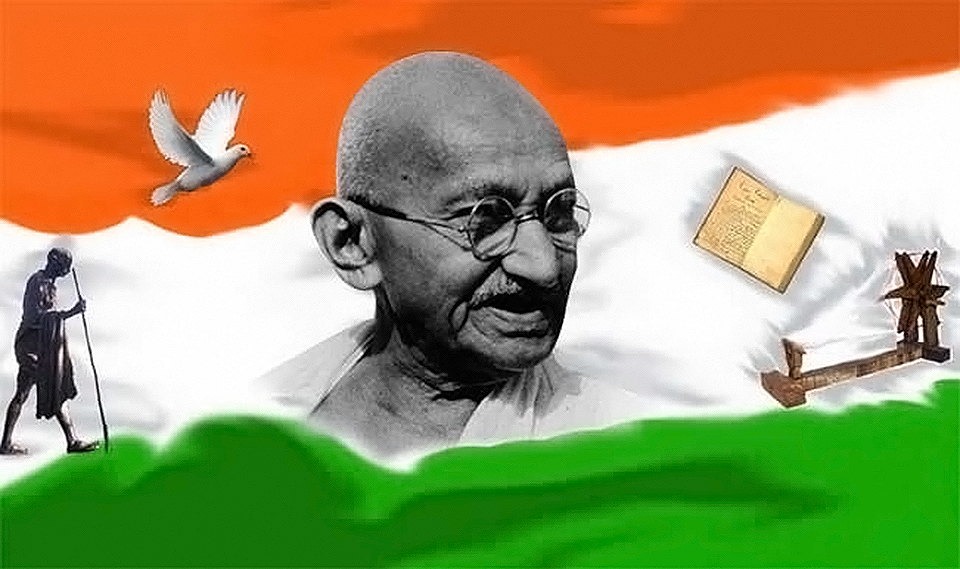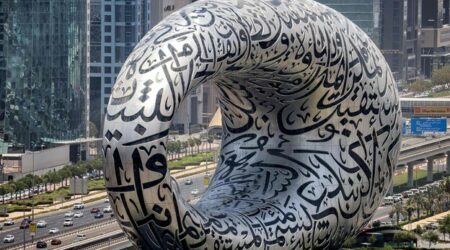By Prof. Naresh Dadhich
When India is celebrating the 75th anniversary of its freedom, it is time to remember those who fought tirelessly for our freedom. As we ponder over the contributions of freedom fighters the first name that comes to mind is Mahatma Gandhi.
We in India today are far away from any iota of the struggle we undertook to free our country. Gen-Z is the fourth generation after independence and has little connection with the national movement. It is imperative that the new generation should be made aware of the national movement and its heroes including Gandhi.
Researchers like Vance Packard, the author of The Pyramid Climbers, have compiled lists of traits that outstanding chief executives tend to possess. Gandhi had them all—sustained energy, deftness, and timely ruthlessness in handling people, the capacity to think to the purpose and somewhat intuitively, zest and fluency with ideas, an ability to bounce back constructively when thwarted or criticized, a love of running things, and a never-despairing passion for the Cause which infects others.
Yet, we cannot rest on our laurel by putting Gandhi in the same class as a corporation president. Mahadev Desai argued that for Gandhi, the innermost secret was not merely passion, but the passion with a divine focus. Where the executive’s passion is for his organization, Gandhi’s was for the “absolute” or for the God or the Truth, whichever word one may prefer.
Gandhi taught Indians to be patriotic and self-reliant. He taught the importance of everyday concerns as well as high politics. He taught brotherhood and no class distinction. He taught that Indians must stand on their own feet and supply their own needs. That they must hate nobody, not even the British, and be brave and straightforward, and grasp that their only enemy was fear.
Today when we evaluate Gandhi, we cannot forget his social impact. His social impact has been tremendous. The improvement in the status of women is among his most striking legacies. Dalits are better off as they got reservations in electoral seats and after independence, the reservation was extended to appointments in bureaucracy also.
Gandhi’s writings on women are voluminous. Its gist, as found in Constructive Program, is this: ‘customs and law’ for centuries had kept Indian women ‘somewhat’ as slaves of men. A ‘revolution’ or ‘radical alternative’ is needed so that they can enjoy gender equality in all fields of life.
In pre-independent India, Gandhi opened the door for them to the field of politics. However, in independent India, the door to the economic field remains more or less shut – not for want of modern law but because of the force of ancient customs like dowry.
This social evil was prohibited by a series of laws in 1961, 1984, and 1986, but they were poorly enforced, if at all. Gandhi’s political legacy survives in independent India primarily in the form of resistance politics – politics organized by nonviolent organizations to address specific political issues.
Gandhians who led such movements, from Vinoba Bhave (1895 –1982) to Baba Amte (1914–2008) have become well known not only in India but also internationally. The same is true of the Chipko Andolan, a resistance movement started in the 1970s, to protest against the forest policy of the Uttar Pradesh government. Here, too, women leader Vandana Shiva had played, and still play, a major role in mobilizing public interest in the environment.
Gandhi’s role in the national movement was not simply to make India free by organizing people but it had a larger impact on the people of India. Writer and historian Susanne Rudolph answered the question of “whether Gandhi did or did not speed Britain’s exit from India” is a “distraction” that overlooks the main point about the way that the movement managed to translate ideas like “Swaraj” and “Satyagraha” into action: “Gandhi’s leadership, regardless of its objective success or failure, had important subjective consequences, repairing wounds in self-esteem, inflicted by generations of imperial subjection, restoring courage and potency, recruiting and mobilizing new constituencies and leaders, helping India to acquire national coherence.”
Gandhi was a votary of democracy. He democratized the constitution of the Indian national congress in 1920-21 and attracted the masses into politics. His major contribution was to make politics accessible to common man. “Democracy,” he wrote in 1939, “must, in essence, mean the art and science of mobilizing the entire physical, economic and spiritual resources of all the various sections of the people in the service of the common good of all.” He was convinced that India cannot be awakened without the rising of villagers as India lives in villages.

Gandhi had his own idea of the Indian village. For him, it was a place to be redeemed. For the redemption to occur, however, the Indian elite had to become villagers in spirit, and, if possible, should have the actual experience of having lived in villages, sharing their sorrows and misery, tensions and conflicts, not to validate them but to lessen or even eliminate them, by personal example and persuasion. Gandhi set an example by living in Sevagram, his village ashram, from 1933 onwards. It is a lesson worth emulating by the politicians of today.
Gandhi’s theory of “Sarva Dharma Sambhav” is relevant today, more than ever. He argued that without religion politics is bereft of morality. For him, religion is not a sect but universal moral principles. For him, every human activity should be governed by moral principles. To retain our sanity we should go back to Gandhi.
If we look back at our journey of seventy-five years, we may have mixed feelings. On the one side, we have achieved what others could not achieve and on the other side, there are things we could not do and are still struggling to achieve.
One of the major achievements of India is its continuous democracy. Many countries that got freedom after Second World War and adopted democracy soon lapsed into militarism or dictatorship. Our neighbor Pakistan is an example of it where democracy and military dictatorship frequently change hands.
I believe, one of the main reasons for the survival of democracy in India is Gandhi’s leadership and guidance during the national movement. He encouraged the masses to participate in politics and train them in democratic values which were hidden in the Indian soul since antiquity.
The mainstream of Indian politics is neither left nor right but the center. When Gandhi emerged in Indian politics in 1920, he chose this path of centralist politics. He advocated protest with compromise when necessary. He never allowed protests to become violent or allowed that to go out of hand. He thus made mainstream politics a centralist politics like that of Aristotle’s middle path. Even today, a middle path is essential for governing our country successfully.
Gandhi will live till India lives. The only caution we have to take that politician should not distort history, the ideas of Gandhi, and his actions to suit their politics. For that, a continuous rigorous attempt is necessary to bring essential Gandhi to the public, especially to the young generation.

(Prof. Naresh Dadhich is Former Vice-Chancellor, Vardhaman Mahaveer Open University, Kota, India. He retired as a professor from the Department of Political Science, University of Rajasthan, Jaipur.)
==
Disclaimer: The views expressed are not necessarily those of The South Asian Times










